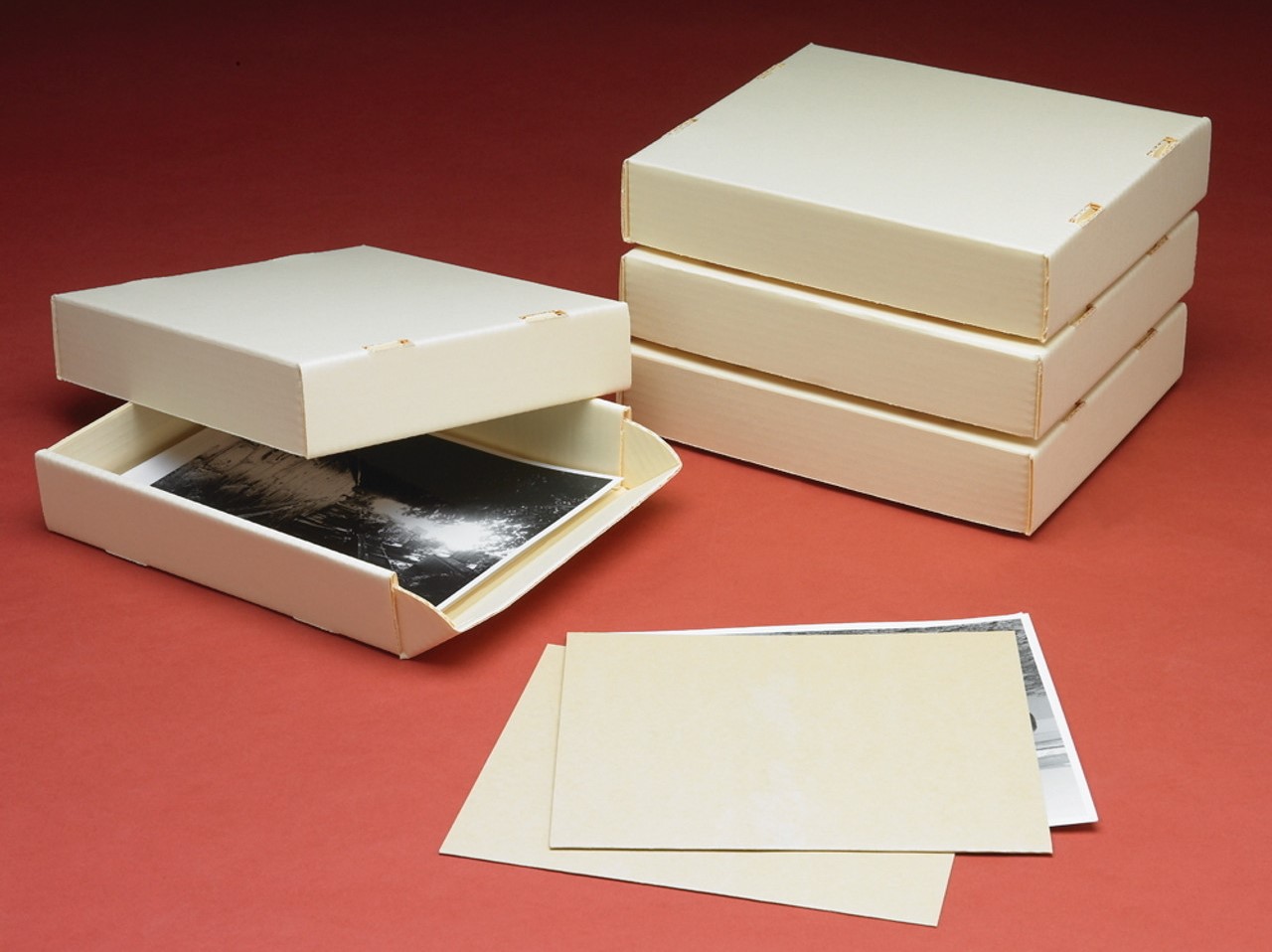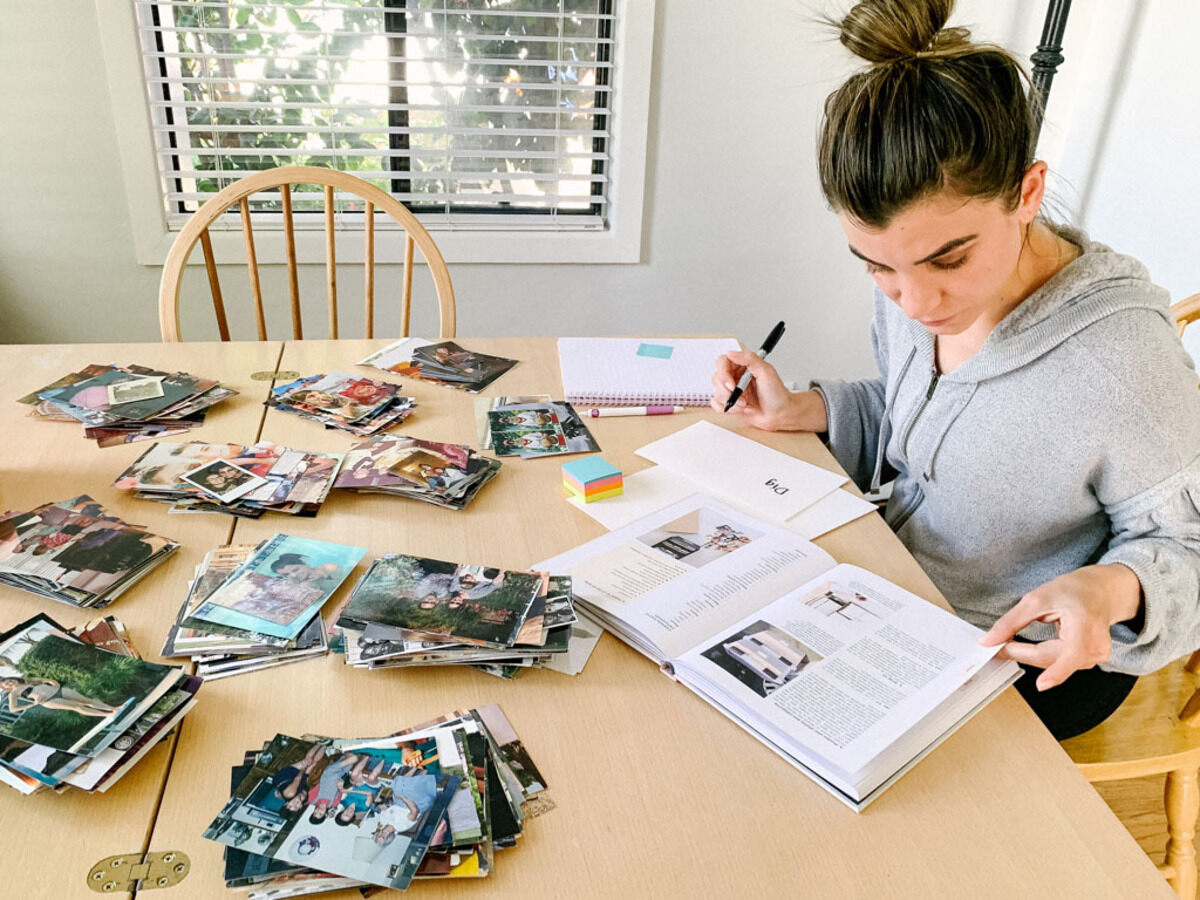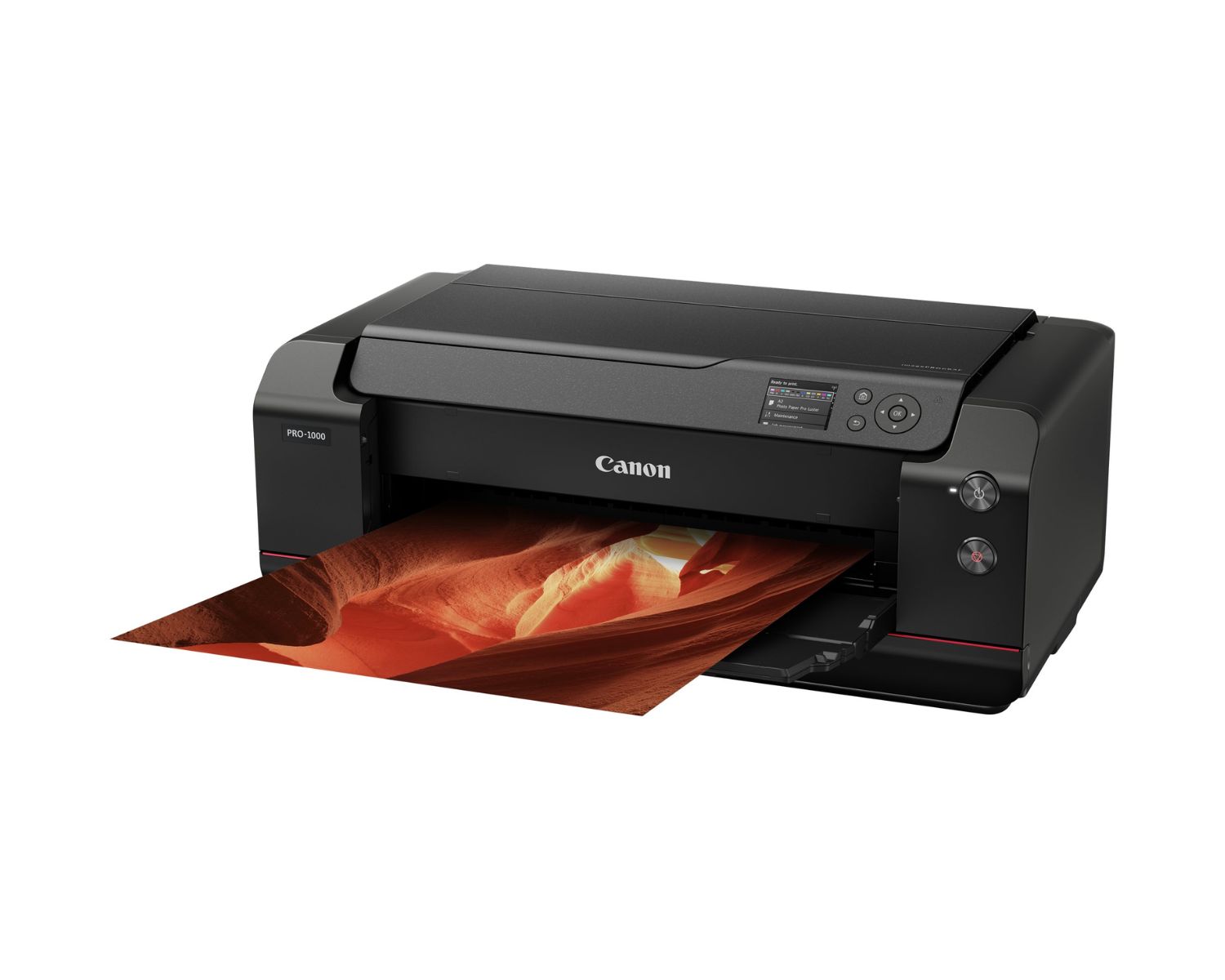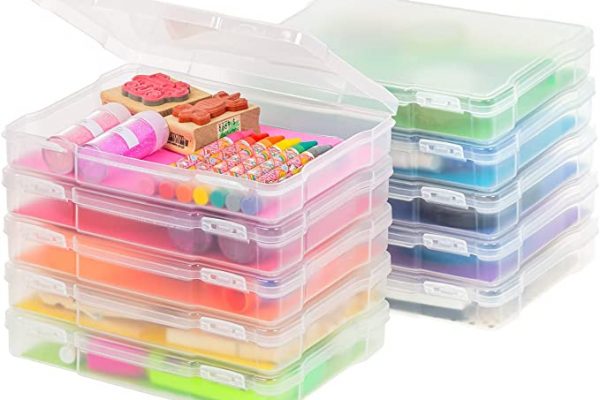

Articles
How To Store Large Photo Prints
Modified: February 28, 2024
Learn the best techniques for storing large photo prints in this informative article. Find out how to preserve your precious memories for years to come.
(Many of the links in this article redirect to a specific reviewed product. Your purchase of these products through affiliate links helps to generate commission for Storables.com, at no extra cost. Learn more)
Introduction
Welcome to our comprehensive guide on how to store large photo prints. Whether you are a professional photographer or simply a photography enthusiast, preserving and protecting your large photo prints is essential to maintain their quality and longevity. In this article, we will provide you with valuable insights and tips on how to choose the right storage materials, prepare your prints for storage, and avoid potential damaging factors.
Photographs capture priceless moments and memories that deserve to be preserved for generations to come. Large photo prints, in particular, require special attention due to their size and vulnerability to damage. By following the techniques and suggestions mentioned in this guide, you can ensure that your treasured photographs remain in optimal condition, free from deterioration caused by elements such as temperature, humidity, light, and pollutants.
Proper photo storage is crucial in preventing issues like fading, discoloration, warping, and physical damage. Whether you have large prints of landscapes, portraits, or artistic compositions, safeguarding them from these potential hazards will help retain their visual appeal and sentimental value for years to come.
Throughout this article, we will guide you through the process of choosing the right storage materials, preparing your photo prints for storage, storing them efficiently, and keeping them safe from damaging factors. Let’s dive in and explore how to store your large photo prints effectively.
Key Takeaways:
- Preserve your large photo prints by choosing acid-free storage materials, preparing them with care, and storing them in a cool, dry environment to avoid damaging factors and ensure longevity.
- Regularly review and maintain storage conditions to protect your cherished memories. Inspect, replace damaged materials, and update storage locations for optimal preservation.
Read more: How To Store Thousands Of Printed Photos
Choosing the Right Storage Materials
When it comes to storing large photo prints, selecting the appropriate storage materials is crucial in preserving their quality and longevity. Here are some essential storage materials to consider:
Acid-Free Archival Boxes
Acid-free archival boxes are specifically designed to protect photographs from deterioration caused by acidic materials. These boxes are made from acid-free and lignin-free materials, such as buffered or unbuffered paperboard or corrugated board. They provide a safe and stable environment for storing your large photo prints, preventing them from coming into contact with harmful substances that can accelerate deterioration.
Polypropylene Sleeves
Polypropylene sleeves are an excellent option for protecting large photo prints from dust, fingerprints, and other contaminants. These sleeves are made from a chemically stable and inert material, which ensures that no harmful elements will come into contact with your prints. Polypropylene sleeves are transparent, allowing you to easily view and enjoy your photographs without the risk of damage.
Acid-Free Tissue Paper
Acid-free tissue paper is an essential component of photograph storage, as it provides an extra layer of protection against acidic materials. Use acid-free tissue paper to interleave between your large photo prints, preventing them from sticking together or transferring any adhesive residues. The acid-free nature of this tissue paper ensures that it won’t cause any damage or discoloration to your prints over time.
Read more: How To Print 5X7 Photos On HP Printer
Archival Photo Albums
Archival photo albums are designed to store and display large photo prints while providing them with maximum protection. These albums are made from acid-free and lignin-free materials, ensuring that they won’t cause any deterioration to your photographs. Look for albums with archival-quality pages and covers that provide UV protection, as exposure to light can fade and degrade prints over time.
When selecting storage materials, always prioritize the use of acid-free and archival-quality products. This will significantly reduce the risk of damage and preserve the quality of your large photo prints for years to come.
Preparing Your Photo Prints for Storage
Before storing your large photo prints, it’s important to prepare them properly to minimize the risk of damage and ensure their longevity. Here are some essential steps to consider when preparing your prints for storage:
Cleaning the Prints
Prior to storage, it’s crucial to clean your large photo prints to remove any dust, dirt, or smudges that may have accumulated over time. Use a soft, lint-free cloth or a microfiber cloth to gently wipe the surface of the prints. Avoid using abrasive materials or excessive pressure, as they can cause scratches or other damage. If there are stubborn spots or stains, use a small amount of archival photo cleaner specifically designed for photographic prints.
Removing any Residual Adhesive
If your large photo prints were previously mounted or framed, there may be residual adhesive or tape on the back. It’s important to remove any of these materials before storing the prints. Use a gentle adhesive remover or rubbing alcohol on a soft cloth to carefully remove any sticky residue. Be cautious not to soak the print or apply excessive pressure, as this can cause damage.
Read more: How To Store Photos For Free
Handling with Clean Hands
When handling your large photo prints, always make sure your hands are clean and free from any lotions, oils, or residue. Even small amounts of oil or dirt can transfer onto the surface of the prints and cause damage over time. Wash and dry your hands thoroughly before handling the prints, and consider using cotton gloves for added protection.
Using Cotton Gloves
Cotton gloves are an excellent tool to minimize direct contact between your hands and the prints. They prevent fingerprints, oils, and contaminants from transferring onto the surface of the prints and help maintain their pristine condition. When handling your large photo prints, wear clean cotton gloves to ensure optimal cleanliness and protection.
By following these preparation steps, you can ensure that your large photo prints are clean and free from any residue or contaminants before placing them into storage. This will help preserve their quality and minimize the risk of damage over time.
Storing Large Photo Prints
Once you have prepared your large photo prints, it’s time to store them in a way that will keep them safe, protected, and in optimal condition. Here are some effective storage methods for large photo prints:
Flat Storage
One of the most common and recommended methods of storing large photo prints is flat storage. Lay each print flat on a clean and stable surface, such as a table or a flat drawer. Avoid stacking multiple prints on top of each other, as this can lead to creasing, bending, or other physical damage. Interleave each print with acid-free tissue paper or archival polyester sheets to prevent sticking between prints and provide additional protection.
Read more: How To Store Old Photos
Using Acid-Free Mounting Boards
For added support and protection, consider using acid-free mounting boards for your large photo prints. Place each print on an acid-free mounting board that is slightly larger than the print itself. This will provide stability and prevent any bending or warping. Make sure the mounting board is also acid-free to avoid any potential damage to the print over time.
Hanging Storage
If you have limited space or prefer a different storage method, hanging storage can be a suitable option for large photo prints. Use acid-free clips or archival-quality sleeves with reinforced holes to safely hang the prints on a clean and sturdy rod or hanger. Hang the prints in a temperature-controlled and humidity-controlled environment to minimize the risk of damage from fluctuating conditions.
Storing in Acid-Free Tubes or Mailing Tubes
If you need to transport or store large photo prints for an extended period, consider using acid-free tubes or mailing tubes. Roll each print carefully with acid-free tissue paper or archival polyester sheets as interleaves to protect against rubbing or creasing. Place the rolled prints inside the acid-free tubes and seal them securely to keep out dust, light, and other damaging factors. Store the tubes in an upright position to prevent any unnecessary pressure on the prints.
When storing large photo prints, always keep them in a cool, dry, and clean environment. Avoid areas with excessive sunlight, high humidity, or temperature fluctuations, as these factors can lead to fading, discoloration, or deterioration of the prints over time.
By utilizing these storage methods, you can ensure that your large photo prints are well-protected and preserved, maintaining their quality and longevity for years to come.
Avoiding Damaging Factors
Preserving the quality and longevity of your large photo prints goes beyond choosing the right storage materials and methods. Avoiding potential damaging factors is equally important in ensuring the longevity of your prints. Here are some key factors to consider:
Read more: How To Store IPhone Photos
Temperature and Humidity Control
Exposure to extreme temperature and humidity can lead to damage, fading, and deterioration of your large photo prints. It’s important to store them in a cool and dry environment with stable temperature and humidity levels. Aim for a temperature between 65-70 degrees Fahrenheit (18-21 degrees Celsius) and a humidity level of around 35-50%. Avoid storing prints in basements, attics, or areas prone to temperature and humidity fluctuations.
Avoiding Direct Sunlight
UV radiation from direct sunlight can cause rapid fading and discoloration of your photo prints. When choosing a storage location, make sure it is away from windows or any direct sources of sunlight. If you plan to display your prints, consider using UV-protective glass or acrylic to shield them from harmful rays. In case you need to transport the prints, cover them with acid-free tissue paper or a dark cloth to protect them from sunlight during the journey.
Protection from Dust and Pollutants
Dust and pollutants can settle on the surface of your large photo prints and cause damage over time. To prevent this, make sure to store your prints in clean and dust-free areas. Keep them in protective enclosures such as acid-free sleeves, covers, or frames. Additionally, avoid smoking or eating near your prints, as particles and residues can settle on them and damage the surface.
Pest Control Measures
Pests such as insects and rodents can cause significant damage to your photo prints. Implement preventive measures to protect your prints from pests, including regular inspection of the storage area for any signs of infestation. Keep the storage area clean and free from food sources that may attract pests. If needed, consider using pest control products or consulting with a professional exterminator to ensure your prints remain safe.
By being mindful of these damaging factors and taking necessary precautions, you can greatly reduce the risk of damage and preserve the quality of your large photo prints for the long term.
Read more: How To Store Digital Photos
Reviewing and Maintaining Storage Conditions
Properly reviewing and maintaining the storage conditions of your large photo prints is essential to ensure their long-term preservation. Here are important steps to follow:
Regular Inspection
Regularly inspect your storage area to ensure that the conditions remain optimal for preserving your photo prints. Check for any signs of damage, such as moisture, mold, pests, or light exposure. Inspect the storage materials, such as boxes, sleeves, or frames, for any deterioration or wear. By conducting routine inspections, you can detect any potential issues early and take necessary actions to address them.
Replacing Damaged Storage Materials
If you notice any signs of damage or deterioration on your storage materials, it’s important to replace them promptly. Damaged boxes, sleeves, or mounting boards can no longer provide adequate protection to your photo prints and may even pose a risk of further damage. Invest in new acid-free and archival-quality storage materials to ensure the continued preservation of your prints.
Updating Storage Locations
Over time, your storage needs may change, or you may discover more suitable locations for storing your large photo prints. As you reassess your storage arrangements, consider factors such as temperature control, humidity levels, and protection from light and pollutants. If you find a better storage location that meets these criteria, consider relocating your photo prints to that area for better preservation.
Remember to handle your large photo prints with care during the process of inspecting and updating storage conditions. Always use clean hands or cotton gloves when touching the prints to avoid transferring dirt or oils onto the surface.
By regularly reviewing and maintaining the storage conditions of your large photo prints, you can ensure that they remain protected and preserved for years to come. This proactive approach will help you identify any potential issues before they cause irreversible damage, allowing you to take the necessary steps to maintain the quality of your cherished images.
Read more: How To Store And Organize Photos
Conclusion
Preserving and protecting your large photo prints is essential to ensure their longevity and to cherish the memories they capture. By following the tips and techniques outlined in this comprehensive guide, you can store your prints effectively and safeguard them from potential damage.
Choosing the right storage materials, such as acid-free archival boxes, polypropylene sleeves, acid-free tissue paper, and archival photo albums, is the first step in ensuring the preservation of your prints. Preparing your photo prints properly by cleaning them, removing any residue, handling them with clean hands, and using cotton gloves will minimize the risk of damage during the storage process.
When it comes to storing your large photo prints, options like flat storage, using acid-free mounting boards, hanging storage, and storing in acid-free tubes or mailing tubes offer different choices to suit your specific needs. By avoiding damaging factors such as temperature and humidity fluctuations, direct sunlight, dust, pollutants, and pests, you can protect your prints from deterioration.
Regularly reviewing and maintaining storage conditions, conducting inspections, replacing damaged storage materials, and updating storage locations are crucial steps in preserving the longevity of your photo prints.
In conclusion, proper storage techniques, along with maintaining optimal storage conditions, will help you preserve the quality and longevity of your large photo prints. By taking the necessary steps to protect your prints from damaging factors and regularly reviewing their storage conditions, you can ensure that these precious memories remain vibrant and intact for generations to come.
Remember, each photo holds a unique story and personal significance. By investing time and effort into storing and protecting your large photo prints, you are preserving those special moments and ensuring that they will be enjoyed and cherished for years to come.
Frequently Asked Questions about How To Store Large Photo Prints
Was this page helpful?
At Storables.com, we guarantee accurate and reliable information. Our content, validated by Expert Board Contributors, is crafted following stringent Editorial Policies. We're committed to providing you with well-researched, expert-backed insights for all your informational needs.










0 thoughts on “How To Store Large Photo Prints”